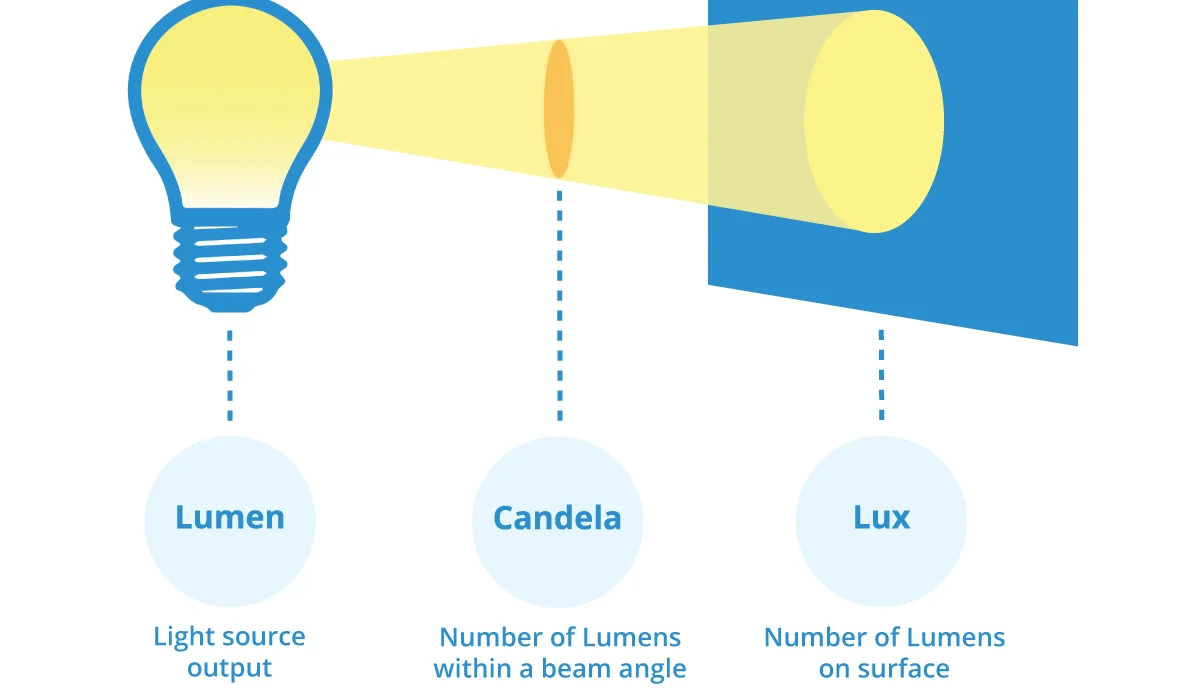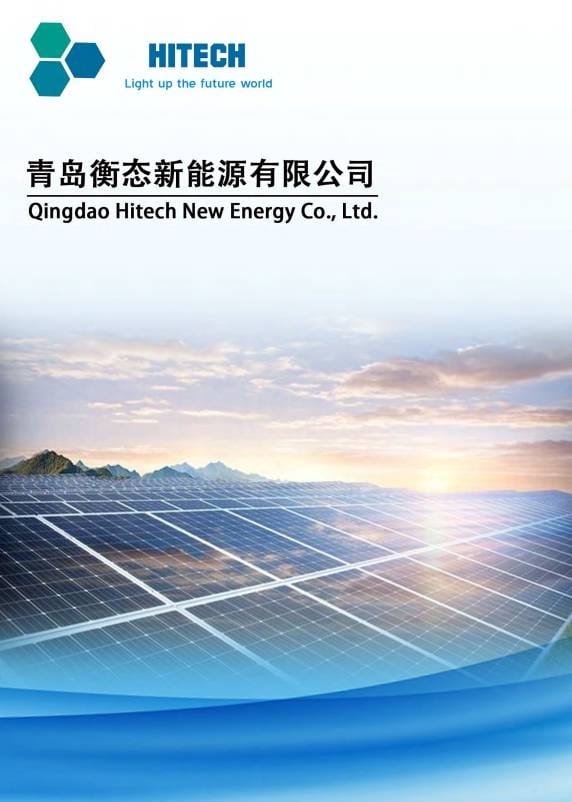Selecting the right lighting solution can be confusing without understanding key metrics like watts, lumens, and lux. These terms are essential for comparing energy efficiency, brightness, and light distribution.
Watts measure energy consumption, lumens define brightness, and lux determines how light spreads over a specific area. Grasping these metrics ensures optimal choices for lighting needs.
In this guide, I’ll break down each term and explain how they connect to real-world applications, helping you make informed decisions.
What are Watts?
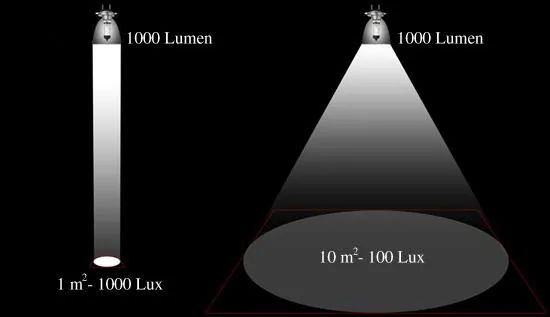
Watts measure the amount of energy a light fixture consumes. Traditionally, higher wattage implied greater brightness, but this is no longer the case with advancements in LED technology.
With the rise of energy-efficient LEDs, brightness now depends more on lumens than watts. For example, a 10W LED can produce the same brightness as a 60W incandescent bulb.
The Shift from Wattage to Efficiency
- Incandescent bulbs required high watts for moderate brightness, wasting energy as heat.
- Modern LEDs achieve high brightness with minimal wattage, saving energy and costs.
- For lighting comparison, wattage is still useful but should not be the sole focus.
| Lighting Type | Typical Wattage | Brightness (Lumens) |
|---|---|---|
| Incandescent (60W bulb) | 60W | ~800 lm |
| LED equivalent (60W bulb) | 10W | ~800 lm |
What are Lumens?
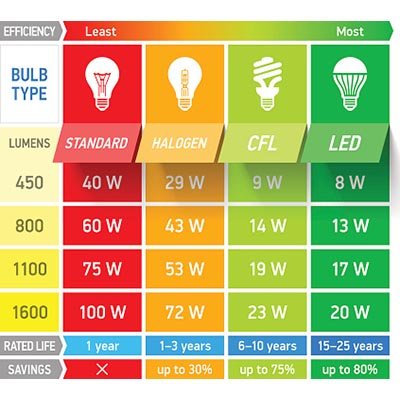
Lumens measure the total visible light emitted by a source. Unlike watts, which measure energy usage, lumens focus on how bright a light appears.
For example, an LED bulb producing 800 lumens is as bright as a 60W incandescent bulb but uses only 10 watts. This makes lumens the key metric for brightness comparison.
Why Lumens Matter More than Watts
- LED technology makes it possible to achieve the same or greater brightness with lower wattage.
- Focusing on lumens ensures that you get the brightness you need without overpaying for energy.
| Room Type | Recommended Lumens |
|---|---|
| Living Room | 1,500–3,000 lm |
| Kitchen | 3,000–4,000 lm |
| Bedroom | 1,000–2,000 lm |
What is Lux?
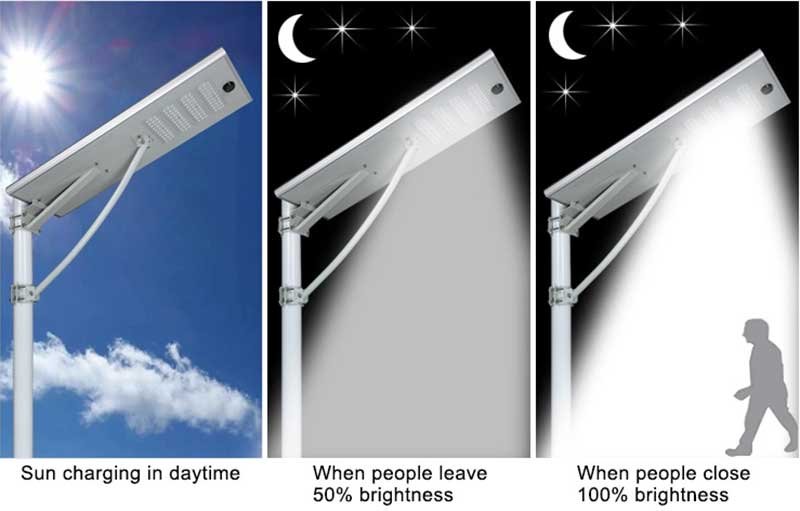
Lux measures light intensity over a specific area. It indicates how well-lit a surface appears, combining both lumens and the area being illuminated.
Lux is calculated as: Lux = Lumens ÷ Area (in square meters). This makes it useful for evaluating lighting in specific spaces like offices, warehouses, or outdoor areas.
Practical Applications of Lux
- Office Lighting: 300–500 lux for desks ensures proper visibility without eye strain.
- Warehouse Lighting: 100–150 lux is typically sufficient for safety and productivity.
- Outdoor Lighting: Streetlights may require 20–50 lux depending on the location and traffic.
Difference Between Lumens and Lux
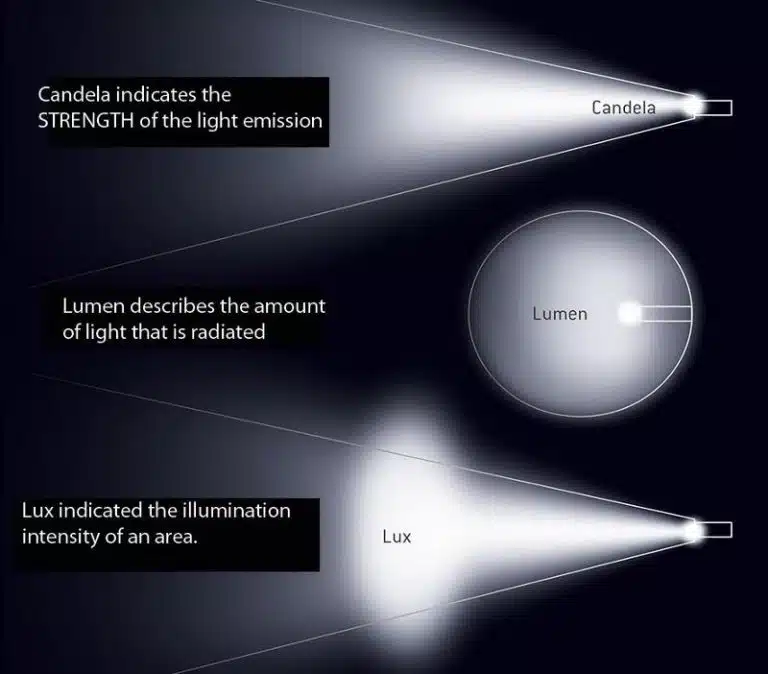
While lumens measure the total light emitted by a source, lux measures how concentrated that light is over a specific area.
For example, a 1,000-lumen light source in a small room will have a higher lux level than the same source in a large open space.
| Metric | Definition | Application |
|---|---|---|
| Lumens | Total light emitted | Comparing bulb brightness |
| Lux | Light per unit area | Designing area-specific light |
How to Convert Watts to Lumens, and Lumens to Lux
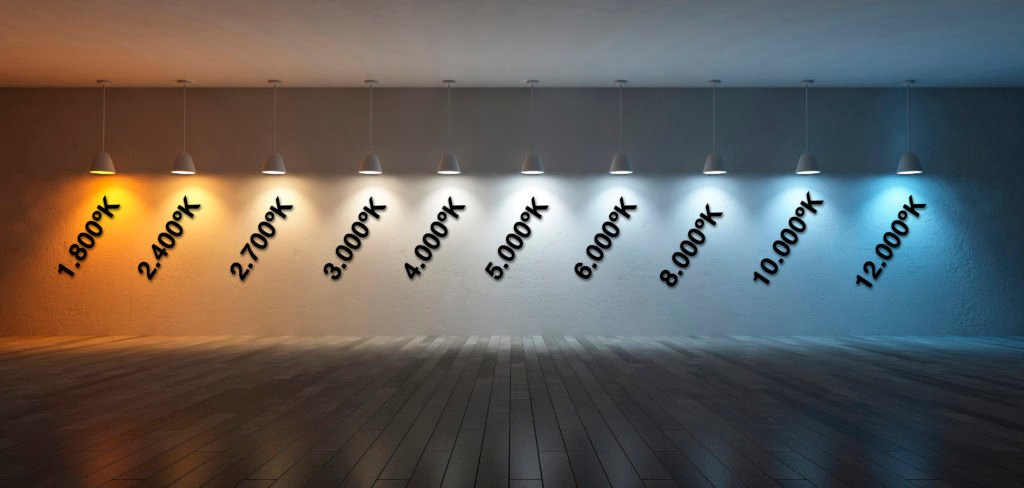
Conversions are critical for evaluating different lighting solutions and planning projects effectively.
Formula for Lumens: Lumens = Watts × Luminous Efficacy (lm/W).
Formula for Lux: Lux = Lumens ÷ Area (in square meters).
Example Conversion
- A 50W LED with 150 lm/W produces 7,500 lumens.
- In a room of 30m², this would result in 250 lux.
Table: Lumens by Wattage and Efficacy
| Wattage | Luminous Efficacy | Lumens Output |
|---|---|---|
| 10W | 150 lm/W | 1,500 lm |
| 20W | 150 lm/W | 3,000 lm |
| 50W | 150 lm/W | 7,500 lm |
How to Improve Luminous Efficacy
Luminous efficacy is the measure of how effectively a light source converts energy into visible light.
Optimizing luminous efficacy ensures brighter lighting while saving energy. This is achieved through advanced technologies like high-quality LED chips, better drivers, and precision-engineered lenses.
Key Strategies for Improvement
- Upgrade LEDs: Use high-efficacy chips for better performance.
- Optimize Reflectors: Properly designed reflectors and lenses can minimize light loss.
- Maintain Fixtures: Clean and maintain lighting systems regularly to prevent degradation.
Conclusion
Understanding watts, lumens, and lux is essential for making informed lighting decisions. Prioritize lumens for brightness, use lux for area-specific lighting, and consider wattage for energy efficiency. By combining these metrics, you can balance cost, efficiency, and functionality to meet your needs.

